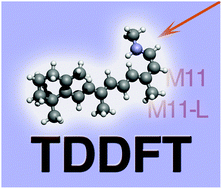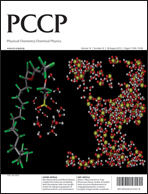Performance of the M11 and M11-L density functionals for calculations of electronic excitation energies by adiabatic time-dependent density functional theory
Abstract
Adiabatic time-dependent density functional theory is a powerful method for calculating electronic excitation energies of complex systems, but the quality of the results depends on the choice of approximate density functional. In this article we test two promising new density functionals, M11 and M11-L, against databases of 214 diverse electronic excitation energies, and we compare the results to those for 16 other density functionals of various kinds and to time-dependent Hartree–Fock. Charge transfer excitations are well known to be the hardest challenge for TDDFT. M11 is a long-range-corrected hybrid meta-GGA, and it shows better performance for charge transfer excitations than any of the other functionals except M06-HF, which is a specialized functional that does not do well for valence excitations. Several other long-range-corrected hybrid functionals also do well, and we especially recommend M11, ωB97X, and M06-2X for general spectroscopic applications because they do exceptionally well on ground-state properties as well as excitation energies. Local functionals are preferred for many applications to extended systems because of their significant cost advantage for large systems. M11-L is a dual-range local functional and—unlike all previous local functionals—it has good performance for Rydberg states as well as for valence states. Thus it is highly recommended for excitation energy calculations on extended systems.


 Please wait while we load your content...
Please wait while we load your content...